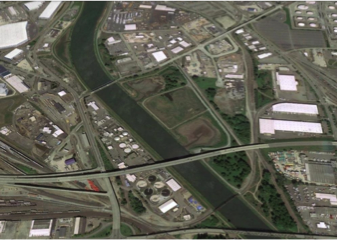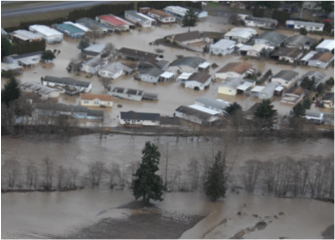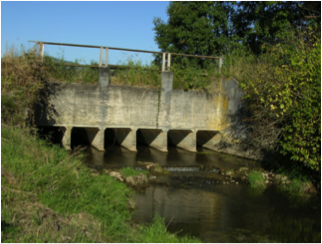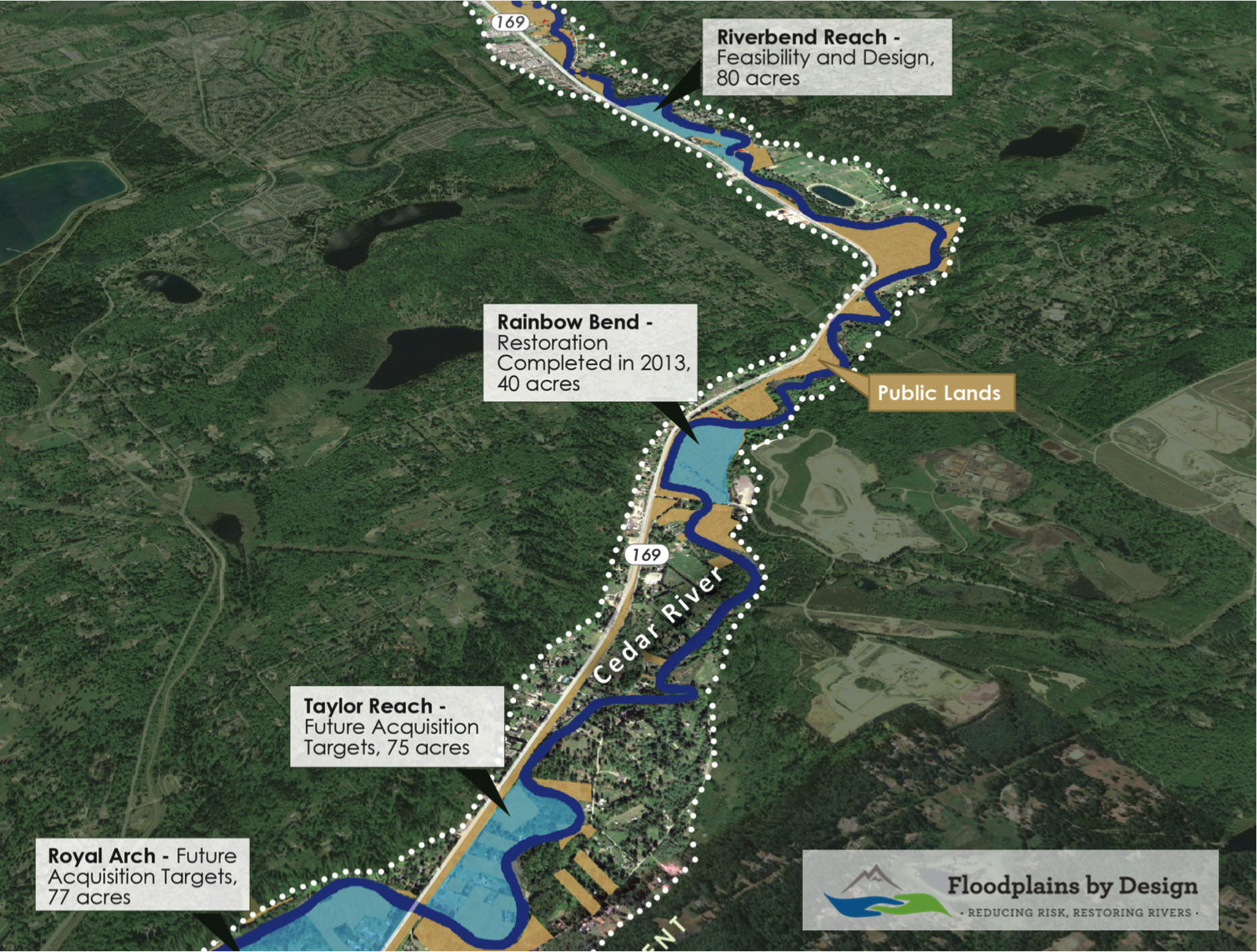Climate Change Impacts on Puget Sound Floodplains

New Reports
Local perspectives on integrating climate resilience into floodplain management and planning in the Stillaguamish and Puyallup River watersheds.
A comprehensive synthesis of research on the projected climate impacts in the Puget Sound region. This report from the University of Washington Climate Impacts Group details observed and projected changes for Puget Sound’s climate, water resources, forests, species and ecosystems, coasts and ocean, infrastructure, agriculture, and human health.
A synopsis of how climate change is expected to affect floodplains and the multiple benefits they provide
A fact sheet summary of the observed and projected changes in the Stillaguamish watershed.
A fact sheet summary of the observed and projected changes in the Puyallup watershed.
Building Strong Communities and Resilient Floodplains
Our changing climate will continue to lead to changing patterns in weather which can exacerbate existing challenges for farmers, floodplain and city managers, tribes, recreationists – in short, all of us.
Less snow in the mountains means our rivers are running higher in winter, but lower in summer. Receding glaciers expose sediment to erosion, meaning our rivers are filling up with sediment and have less room for water. Higher sea levels means our low lying river valleys are at increased risk of flooding during coastal storms.
As the effects of climate change unfold, extreme events─ like floods, are likely to occur. But…
Climate impacts are not determined by the weather alone
Being smart about climate risk requires an understanding of hazards ─ both man-made and natural, and potential consequences.





Resilience in the context of floodplain management
Reducing risk and improving resilience is a key component of the work underway and in planning from the Floodplains by Design partnership. Below are two examples of the integrated, system-wide approach championed by Floodplains by Design.

- Acquisition of up to 15 properties (approximately 45 acres) and removal of 14-15 homes from
the floodplain to make way for future restoration on 232 acres. - The Riverbend project design, when implemented, would add 49 acre-feet of flood storage,
resulting in 100-year floods that are lower and slower and therefore less erosive, improving flood
protection to an additional 12 homes and 19 parcels worth $4.6 million assessed value. - Project actions to be designed and permitted will also improve habitat over a 0.8 mile length,
including 1900 feet of new side channel habitat.
Cedar River Corridor Plan
This plan includes a high priority reach for flood risk reduction and salmon habitat restoration.
Floods affect homes, critical transportation infrastructure and associated fiber optic cable, a community trail, and the City of Renton downstream. Since 1993, King County has spent $900,000 in flood repairs at the proposed project sites, including $450,000 in the last two floods. Planning for and addressing flooding and habitat needs simultaneously will protect public safety, restore salmon and save money over the long term.
Calistoga Reach Project
The City of Orting used to suffer major Puyallup River flooding almost every year, despite the presence of a levee meant to protect the city. Roads and highways become inundated, shutting down traffic into, out of and through town. Increased sedimentation in the river impaired salmon habitat downstream.
In response, a partnership between local government, state agencies, The Nature Conservancy and the Puyallup Tribe stepped in to take action. Moving and strengthening the levee reconnected 42 acres of floodplain, thus protecting Orting from future flooding by providing the river more room. The project is already paying dividends, as the levee survived a major storm in January 2015, keeping Orting high and dry. Just downstream, Pierce County is restoring 100 acres of floodplain forest habitat and reconnecting side channel habitat. Carefully designed logjams will create habitat for chinook salmon, bull trout and steelhead. When completed, this side channel will be the longest on the Puyallup River and have water flows year-round.





